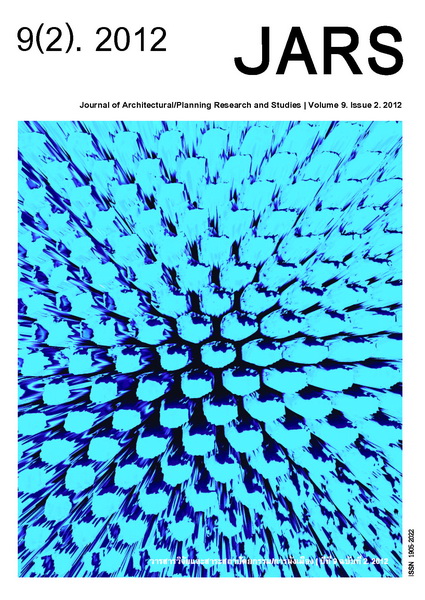Environmentalism, Environmental Ethics, and Some Linkages with Landscape Architecture
Main Article Content
Abstract
Humans have long reflected on their relationship with the environment. In Western culture, environment is the product of a religious tradition (Cronon, 1996). Since the Second World War, concerns over protecting the environment against harm caused by human actions have been raised. Environmentalism first took shape with George Perkins Marsh, whose work, Man and Nature (1864), traced the various implications of forest destruction across the natural landscape. The paper first reviews the terminology of environmentalism and its related terms. It will accordingly examine the historical perspective of environmentalism and the moral values underlining relations between humans and the environment: namely, environmental ethics. In conclusion, the paper will review some linkages between environmentalism and landscape architecture, a discipline dealing directly with the shaping of land and environment, through the works of the two great figures in the disciplines, Frederick Law Olmsted and Ian McHarg. There might not be simple answers for the environmental problems we face today. However, understanding environmental thought and its relation to closely related disciplines such as landscape architecture could provide a more inclusive environmentalism and help create more livable places for all.
Downloads
Article Details

This work is licensed under a Creative Commons Attribution-NonCommercial-NoDerivatives 4.0 International License.
All material is licensed under the terms of the Creative Commons Attribution 4.0 International (CC-BY-NC-ND 4.0) License, unless otherwise stated. As such, authors are free to share, copy, and redistribute the material in any medium or format. The authors must give appropriate credit, provide a link to the license, and indicate if changes were made. The authors may do so in any reasonable manner, but not in any way that suggests the licensor endorses you or your use. The authors may not use the material for commercial purposes. If the authors remix, transform, or build upon the material, they may not distribute the modified material, unless permission is obtained from JARS. Final, accepted versions of the paper may be posted on third party repositories, provided appropriate acknowledgement to the original source is clearly noted.
References
Arnold, D. (1996). The problem of nature: Environment, culture and European expansion. Oxford: Blackwell Publisher.
Barry, J. (1999). Environment and social theory. New York: Rouledge.
Bayer, H. (1953). World geo-graphic atlas: A composite of man’s environment. Chicago: Container Corporation of America.
Buckingham, S. & Mike, T. (2008). Understanding environmental issues. London: Sage Publication.
Carter, N. (2001). The politics of the environment: Idea, activism, policy. Cambridge: Cambridge University Press.
Cronon, W. (1996). Uncommon ground: Rethinking the human place in nature. New York: W. W. Norton & Company.
Horayangkura, V. (2011). การสร้างสรรค์สภาพแวดล้อมชุมชนเมืองที่น่าอยู่อาศัย: ปัญหาที่มองไม่เห็นและแนวทางแก้ไข [Creating a livable urban environment unseen problems and possible solution]. Journal of Architecture/Planning Research and Studies, 8(2), 9-26.
Kibert, C. J., Thiele, L., Peterson, A. & Monroe, M. (2006). The ethics of sustainability. London: John Wiley & Sons.
Lowe, P. & Goyder, J. (1983). Environmental groups in politics. London: George Allen and Unwin.
Martin, J. (2011). Genius of place: The life of Frederick Law Olmsted. Cambridge, MA: Da Capo Press.
Milton, K. (1993). Environmentalism: The view from anthropology. London: Routledge.
Spirn, A. W. (1996). Constructing nature: The legacy of Frederick Law Olmsted. In C. William (Ed.), Uncommon ground: Rethinking the human place in nature. London: W. W. Norton & Company.
Thompson, I. H. (2000). The ethics of sustainability. In J. F. Benson & M. H. Roe (Eds.), landscape and sustainability. London: Spon Press.
Thompson, I. H. (1998). Environmental ethics and the development of landscape architectural theory. Landscape Research, 23, 175-194.
Waterman, T. (31 March, 2012). Interview for the dissertation.


